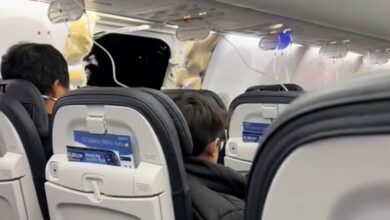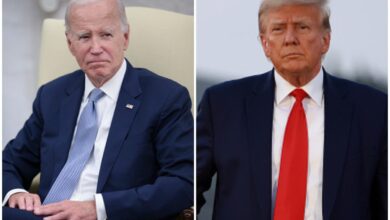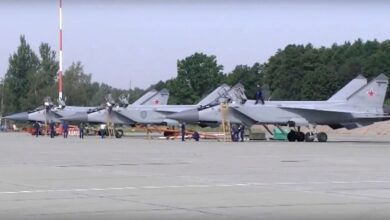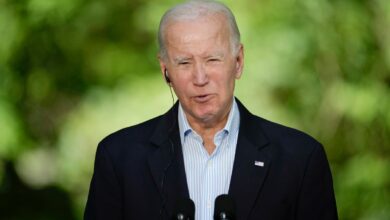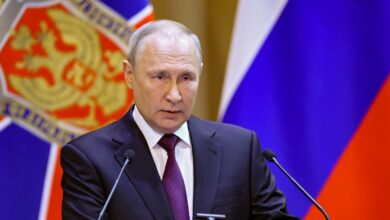‘They are trying to destroy Ukraine’s identity’: Putin’s Russification gathers pace 100 days into the war

For the first few days after the Russian soldiers rolled into the Ukrainian city of Berdyansk, Katya, 34, stubbornly joined the demonstrations against the invaders every day.
The southeastern port city – like many along the Azov Sea – was largely Russian-speaking before the war.
But despite this, as the soldiers marched in, men, women and teenagers gathered in central streets and squares chanting that the Russian occupiers should “go home”.
Around them, armoured cars scrawled with the letter Z crawled across town, while soldiers took over all the main administrative buildings. The radio station, occupied by Moscow’s men, began blaring President Putin’s propaganda.
Residents were determined to stand their ground until people started to disappear.
“From day one they pointed guns at us as we gathered but then they started applying more force gradually,” Katya says, clutching her 8-year-old daughter Sophia just moments after having successfully fled the occupied town.
“The first week and a half was military police, then actual soldiers, then they started shooting in the air, handcuffing and taking people away.”
She says she finally gave up on the rallies when two of her friends were kidnapped. Rumours spread that some of the detainees were being forcibly deported to Russia.
“My friends were eventually returned a few days later, but they were broken,” she recalls with a catch in her throat.
“We have no idea what happened to them. I have never seen anyone so terrified. They stopped talking to us. They stopped talking at all.”
Anastasia, 18 who had fled Melitopol, about 120km west of Berdyansk, also a predominantly Russian-speaking city in the Zaporizhzhia region, says she knows of two girls who joined protests and organised strikes, and also vanished.
“They are still missing,” the international law student adds anxiously. “We don’t know whether they are still in Melitopol or outside the country.”
In the early days of President Putin’s ferocious invasion of Ukraine, hundreds if not thousands of citizens took to the streets in occupied cities to protest the advance.
But as Moscow has withdrawn from Kyiv, unleashing the full fury of its army on the south and east of the country, the crackdown on critics has only intensified, making it too dangerous to hold public protests. Instead partisan attacks on Russian positions have been on the rise, while the bombing and shelling is ongoing.
And now, 100 days into the war, Ukrainians argue that the crackdown on the protests and silencing of dissent, as well as the disappearances of critics, is all part of Moscow’s goal for Ukraine that goes beyond merely physically taking ground.
A picture taken during a visit to Mariupol organised by the Russian military
Russia vehemently denies this but the testimonies of those who have fled occupied territory speak of a subtler war, a cultural and demographic one that may have a deeper and deadlier impact on Ukraine than the battle scars.
The Ukrainian authorities themselves are worried in particular about the forcible transfer of citizens.
Lyudmila Denisova, Ukraine’s human rights ombudsman, last week claimed that as many as 1.5 million Ukrainian citizens, including hundreds of thousands of children, have been “illegally removed” to Russia since the war began. She said that they are subjected to “filtration camps” in the east of Ukraine before crossing.
Western intelligence sources speaking to American media estimate lower numbers that range from tens of thousands of people to as many as one million.
Local people and refugees from Donetsk region line up for humanitarian aid distributed from Russian military trucks in Berdyansk
A woman hugs her grandson as she arrives in a bus with people who fled to a reception centre for displaced people in Zaporizhzhia

